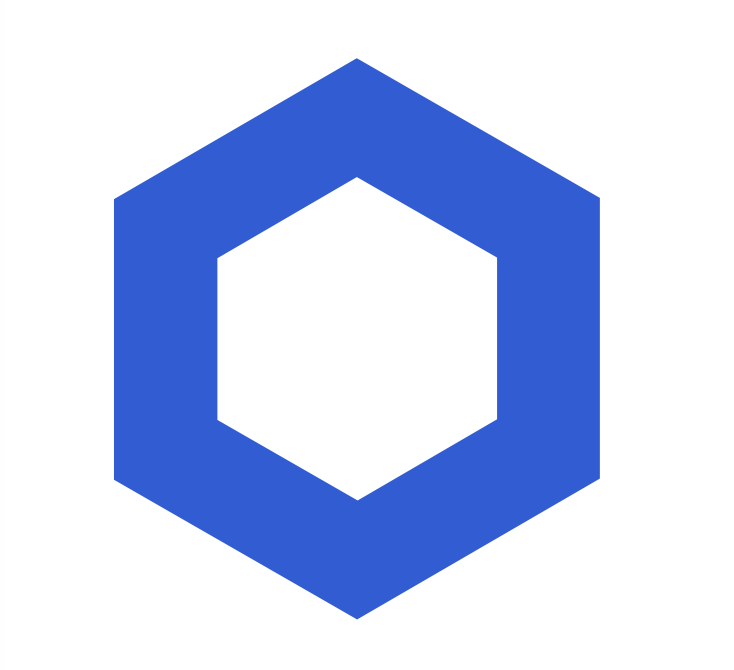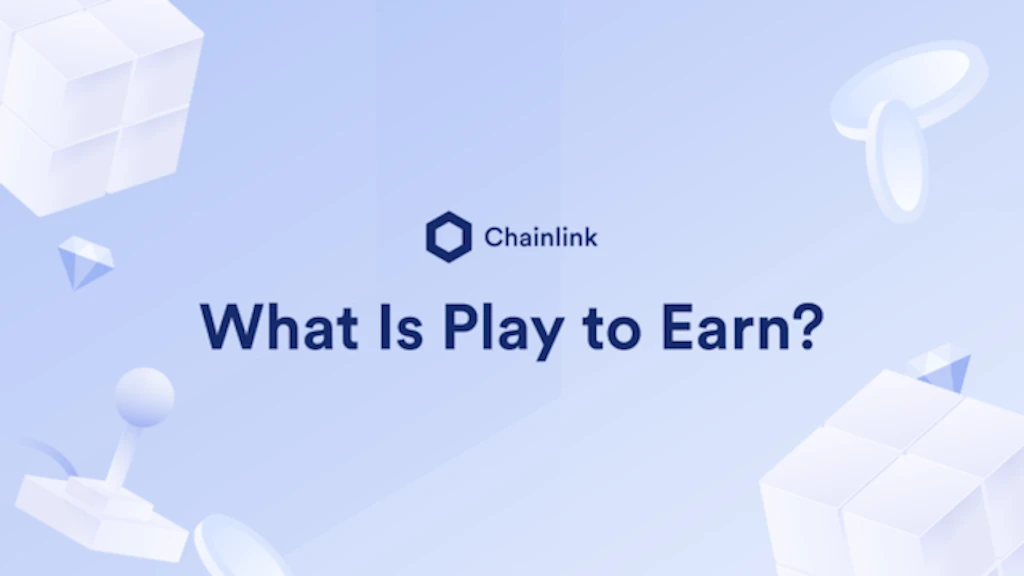
Video games have changed the way entertainment is played for a generation. Since the introduction of Tennis for Two in 1958, the gaming industry has taken the world by storm. Games like League of Legends, Fortnite, and Minecraft are enjoyed by millions of players around the world.
According to Reuters,In 2018, the revenue of the game industry surpassed that of entertainment media such as movies, TV, and music, and its development is booming. The Entertainment Software Association (ESA) predicts that there will be227 millionimage description
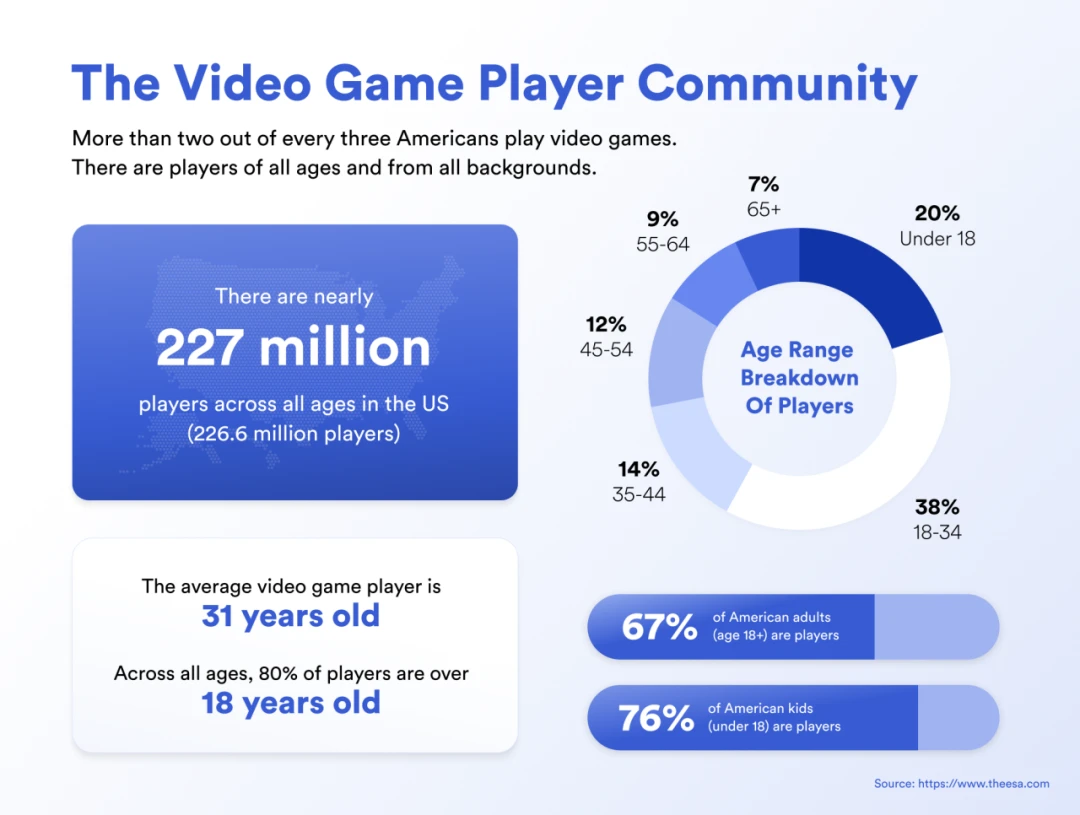
text
Game developers create amazing virtual worlds that incorporate a variety of game mechanics, visual effects, and narrative experiences. With engaging storylines, high-definition visuals, and competitive multiplayer battles, the game provides players with a highly interactive gaming experience that is difficult to replicate through other media.
In the past few years, a new game mode has gradually emerged in the blockchain ecosystem, that is, play to earn (hereinafter referred to as P2E). This new type of game uses crypto assets andNFT, to protect the ownership of in-game currency and items for players. NFT, on the other hand, directly connects to the digital economy outside the game and realizes value in the real world.
first level title
What is the intrinsic value of the game?
Intrinsic game value refers to the value generated by in-game items in the real world. Many of the best-selling games have real-world value that cannot be ignored. In fact, traditional game economic models have demonstrated that, under the right conditions, gamers collectively attach a certain value to game content, including game mechanics and game items that are functional or even purely decorative .
In recent years, the value of rare items in games such as Counter-Strike: Global Offensive (hereinafter referred to as CS:GO), Valorant, World of Warcraft and Yuanshin has been increasing, and the trading market has continued to grow, all of which prove that player creation value has become An unstoppable force.
CS:GO is a very popular competitive multiplayer first-person shooter game. In the original version, players could join a team of five and face off against another team. All players have access to the same gear, so the highest ranked players tend to be those with the highest game skill and the most accurate shots.
image description
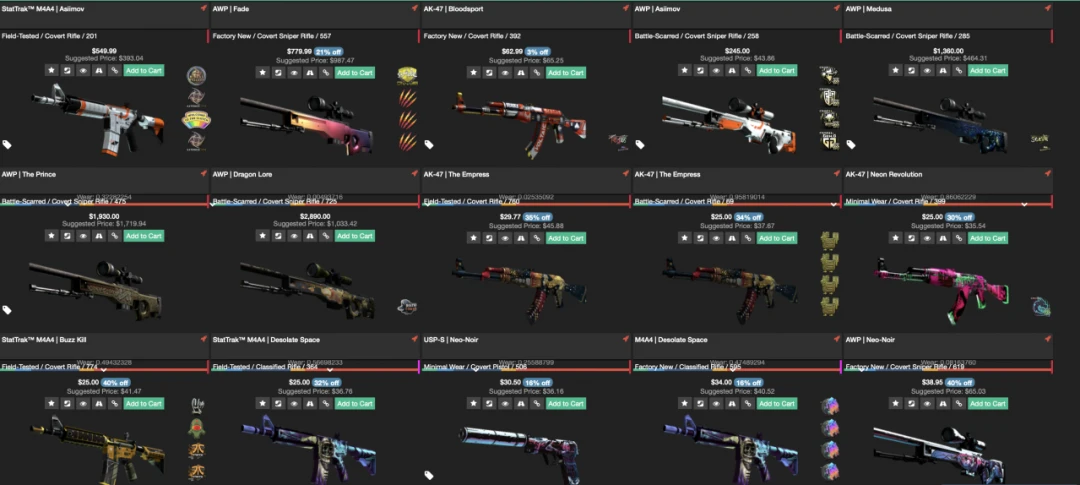
BitSkin is a third-party trading market. CS:GO players like to trade CS:GO game items on it, and this platform can accept legal currency payment.
While other types of games, such as massively multiplayer online role-playing games (hereinafter referred to as MMORPG), will provide players with functional game items. These games adopt the pay-to-win model. Whoever spends more money and time can get the most powerful game attributes and props.
Different from CS:GO, although MMORPG games have their own game markets, there are also unregulated third-party trading markets, where in-game items can be freely traded and legal currency payments are accepted, but most MMORPG games are not established with the real world formal connection. Unregulated third-party trading is common, with players often making one-on-one deals outside of the game. Some players also use third-party websites, and these websites are not authorized by the game publisher, but conduct transactions privately. Such behavior is usually punished in the game, and players also need to take certain risks to participate in this type of transaction. Despite this, many players will still participate in this risky underground transaction because of the demand.
Gachapon games like Yuanshin will encourage players to keep spending money to open treasure chests in order to obtain the most powerful game items and characters. In this type of game, the intrinsic value of the game accounts for a large proportion of the developers income. Yuanshen’s card-drawing mechanism made it the No. 1 game in terms of revenue in the first year, which fully demonstrates the value of items in the game. Even if the game itself does not establish a player market, it can also create such a high value. .
first level title
What is driving up the intrinsic value of the game?
It is difficult for people who do not play games to understand the concept of game intrinsic value. Why do game items have such a high value for gamers?
Social motivators such as social circles and peer pressure are a core reason that largely drives people to play games. In addition, some people play games to escape reality and seek excitement. Players often build communities around games to meet these endogenous needs and create value from the inside out.
We can take traditional sports such as golf as an example to explore the meaning of it. Golf can be played alone. As long as you have a club and a field, you can play. This is called single golf.
However, if solo golf becomes a multiplayer event, it will add more fun. Playing golf with a group of friends adds comparison and social attributes to a simple sport. Every swing you make is compared to everyone elses swing, par becomes the norm, and the level of skill is naturally differentiated. On the golf course, you can make friends (and enemies) and your group will naturally form a social hierarchy. It was originally just a simple sport, but now for everyone, the meaning of golf goes beyond the sport itself.
On the golf course, the clubs you use and the clothes you wear reflect your social status within the circle, so these items are worth more than their practical value. When you play golf alone, you only pay attention to whether this club can make you hit more accurately, better and more powerfully. And now, your clubs are more social and competitive. Because of this, commodities such as T-shirts and caps signed by professional players have also become a status symbol, so their social value and economic value have also skyrocketed.
This phenomenon is very common in the circle of popular professional athletes. Like athlete-endorsed shoes, signed tracksuits, and gaming items, fans around the world flock to these collectibles, even if many of the items themselves have no practical value. And right now, mainstream video games are going through the same thing, with in-game items and currencies enjoying the same frenzy.
Players will choose the game that best meets their needs from the two dimensions of entertainment and community. Some games provide players with an exciting gaming experience; some allow them to escape from reality; and some satisfy other core needs of players. In either case, the games intrinsic value is co-created by the game and the player. The two work together to lay a solid foundation for the games intrinsic value.
first level title
Balancing the Powers: Controlling the Process of Value Creation
In the field of mainstream games, the content of the game is currently controlled by one party. This entity controls the game development process, permissions, and game content. This is what we usually call centralization, that is, one party or a small group of interested parties are controlled in a centralized manner.
secondary title
Closed Economy VS Open Market
We can compare two multiplayer games that are very popular today: Valorant and CS:GO. Both games are skill-based first-person shooters, and all game items are skins, which have no function in themselves. However, since CS:GO has many open third-party marketplaces where players can trade items, CS:GO players are more likely to gain value and financial rewards from the game. In contrast, Valorant does not allow trading game items in any third-party marketplaces.
CS:GO, on the other hand, combines well-designed game mechanics, a strong player community, and an open market operated by third parties, so it can create huge game intrinsic value. Every game item has a market price, players who own game items can get economic returns, and game developers will continue to generate income because of players enthusiasm for game items.
image description
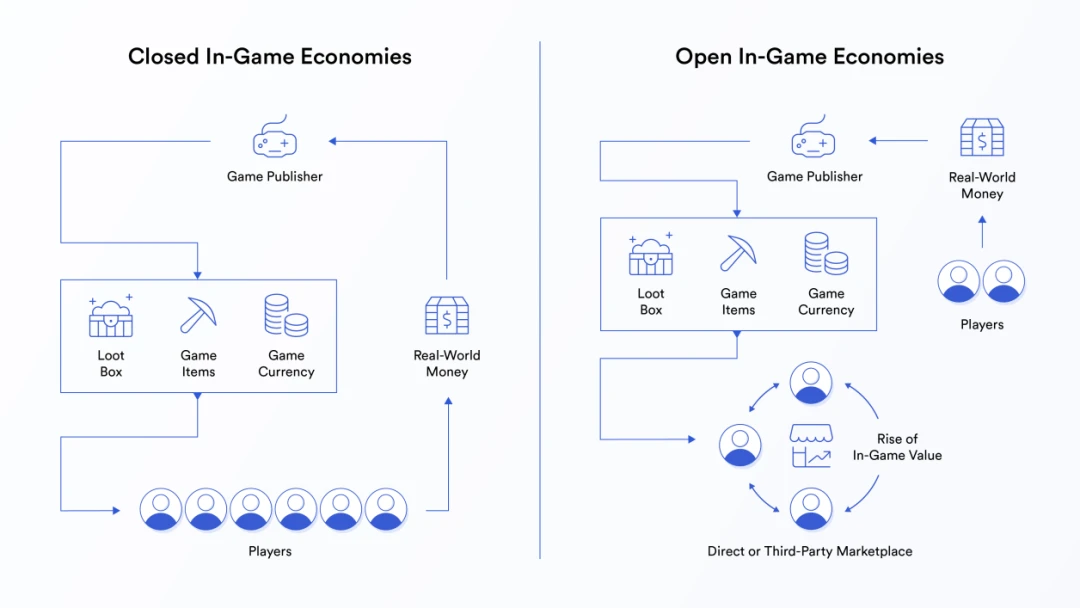
An open economy is the catalyst that drives gamers to create value from game items.
Valorant has adopted a closed system, and game items are prohibited from being traded on the market. Players do not have any channels to trade game items, they can only purchase game points with legal currency in exchange for the opportunity to obtain game items, and these items can only be used in the same account forever. No economic mechanism is allowed in the game, so the economic mechanism is completely absent unless the game developer decides to develop this feature in the game.
From a free market perspective, doing so greatly limits the growth of the games intrinsic value. The price of all game items in Valorant does not change with supply and demand, and the intrinsic value of the game has absolutely no chance of growing like CS:GO. No matter how rare or valuable an in-game item is, there is no way for players to develop further from the initial release and to widen the gap in value, so neither the player nor the game developer benefits.
In todays game industry, the centralized entity behind the game has the power to revoke the players ownership of a certain game item, or prohibit the transaction of game items from the beginning, so as to take all the original intrinsic value of the game as its own, and cut Cut off all possibilities for players to create value. While players largely drive the value of multiplayer online games, they have no control over the value of in-game items or currency.
first level title
Create an economic mechanism that truly belongs to players through P2E
Many new blockchain games will issue NFTs and game tokens, and the tokens can be traded in real-world markets to provide gamers with verifiable digital ownership of game items. These games have established a permissionless economic mechanism that truly belongs to the players, and brought players a fair, fair gaming experience with real economic returns.
With blockchain technology, gamers can earn money while playing games. And players will also drive the growth of the games intrinsic value and create a robust, unique and formal economic mechanism. Of course, the development of game content still needs to adopt a centralized method, but the NFT of in-game items and the player market can completely adopt a permissionless form. In these open platforms, neither party has the right to prohibit the transaction of game items, nor has the right to confiscate players game items.
secondary title
Case Sharing: Collectible Card Game
One of the best examples of verifiable ownership is trading card games (TCGs) like Pokémon and Yu-Gi-Oh. In the game, players need to purchase card packs to have a chance to obtain high-value cards, which is equivalent to opening treasure chests in the real version. Players who purchase the pack will receive random rare cards and become the sole owner and beneficiary of the packs contents.
As games like Pokémon, Yu-Gi-Oh, and Magic: The Gathering become more popular, game designers and players alike can benefit. Game designers benefit from initial sales and network effects from third-party marketplaces; players benefit from trading high-value rare cards. Unlike most digital goods, once the random card pack is purchased by the player, the player has the exclusive ownership of the pack and can decide whether to sell the pack for cash. Magic has adopted this model, so in 2021, its publisher Wizards of the Coast will rank first in the industry in terms of revenue. And other collectible games using this model have also been very successful.
andGods UnchainedandSplinterlandsimage description
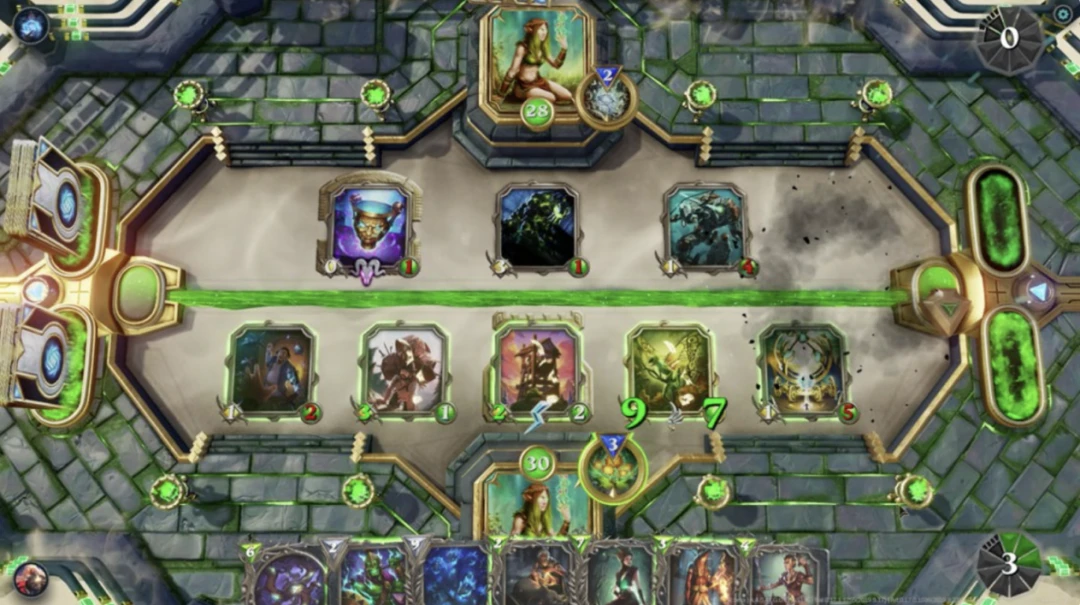
text
secondary title
Blockchain MMORPG game
Games that focus on social attributes such as MMORPG can benefit greatly from blockchain technology. Usually, this type of game will establish its own trading market. Players can complete various tasks such as fighting monsters and clearing dungeons in the game to obtain game items, and sell these items in the market in exchange for game currency.
Avid gamers often dedicate themselves to their in-game characters, but the rewards are often limited to the game itself. However, because players take the game very seriously and put a lot of energy into it, underground transactions are common. Players often trade high-value game items for fiat currency on unauthorized markets because there is no formal way to convert intrinsic game value into real-world value.
secondary title
The value of NFT for skill games
Skill gamers can also benefit from NFTs. Skin game items are undoubtedly valuable to players, and establishing a more formal market and economic mechanism will make the game experience to a higher level.
first level title
The Current State of P2E and Blockchain Gaming
P2E games have formed a trend in the blockchain ecosystem. Over the past year, a wave of P2E games has emerged and become mainstream. The fastest growing and most popular game isAxie Infinitynone other than. This is a collectible card battle game. Players collect cute NFT elves and fight in the game.
Axie Infinity truly embodies the core value of blockchain technology and is committed to continuously improving the level of decentralization. Sky Mavis, the team behind Axie Infinity, has planned to achieve community governance by staking the native governance token AXS. Community members will vote based on on-chain governance, and decide the future development of the NFT market, the allocation of funds in the treasury, and the salary payment of Sky Mavis employees in a minority-obedience-majority manner.
Under this system, active players will receive more AXS tokens, decision-making power will be allocated to the most loyal players, the game will finally truly belong to the player group, and the community as a whole will gain more and more power.
image description
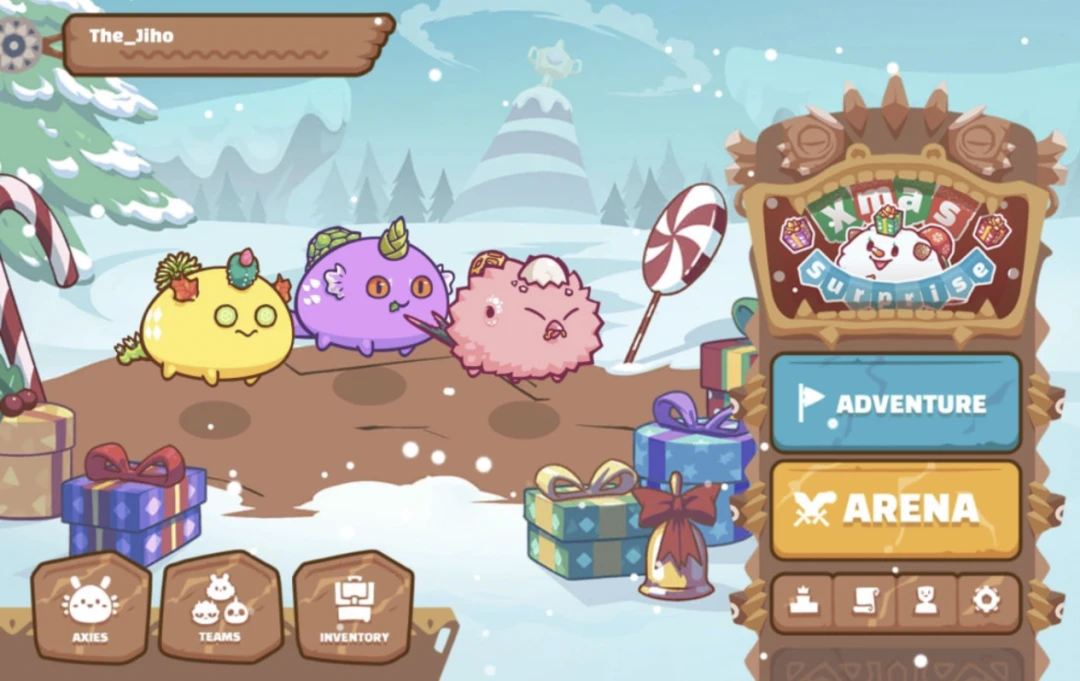
Three Axie elves can form a team. After forming a team, players can participate in multiplayer or single-player battles to obtain rewards.
Players of Axie Infinity can earn rewards directly by playing the game and earn SLP rewards every day. The verifiable ownership of the Axie Pokemon NFT means that players can capture some value from the initial cost of entering the game. The cost of entering the game fluctuates with the market price of the NFT. If the player chooses to breed Axie elves by himself, he can sell or keep the bred elves, and the selling price depends on the rarity of the elves. Axie Infinity is currently the most popular P2E game in this fast-growing gaming space. In fact, many people in the Philippines are making money playing this game.
Different blockchain projects have also given their own understanding of the P2E concept. The collectible card game Gods Unchained avoids homogeneous tokens such as SLP, and instead allows players to randomly win virtual card packs by playing games. Players can sell high-value card NFTs in the market to realize the time and energy they have invested.
Therefore, we can also say that blockchain games and P2E are largely the same concept. Almost all blockchain games have adopted the P2E model, because they provide players with verifiable ownership of game items and currencies, and these game items and currencies have value in the real world. Any type of game can use this mode. Games such as Axie Infinity, Gods Unchained, and My DeFi Pet are the pioneers, giving everyone a taste of P2E games.
first level title
The Value of Chainlink to the P2E Game Economy
Chainlinksecondary title
Using Chainlink VRF in Blockchain Games
Chainlink Verifiable Random Function (VRF)
Chainlink Verifiable Random Function (VRF)image description

RNG-based games will also have a better experience because random numbers are more transparent and verifiable.
Axie Infinity is connected to Chainlink VRF,It ensures gamers that the attributes of the initial Axie sprites are randomly assigned, and that the randomness is publicly verifiable. Each Pokémon has a different rarity, function, and stats, and therefore affects their real-world value.
secondary title
Access Chainlink Data Feeds to input data for the game
Blockchain games can be accessedChainlink Data Feeds, create dynamic game item NFT, and build a community on this basis. These dynamic NFTs can create unique game scenarios based on real-world events.
We can imagine a game where in-game items can be updated automatically based on predefined conditions. Specifically, a base weapon skin can change based on player-specific game statistics, such as the number of goals a player has scored or the number of deaths a game character has while using the base weapon.
image description
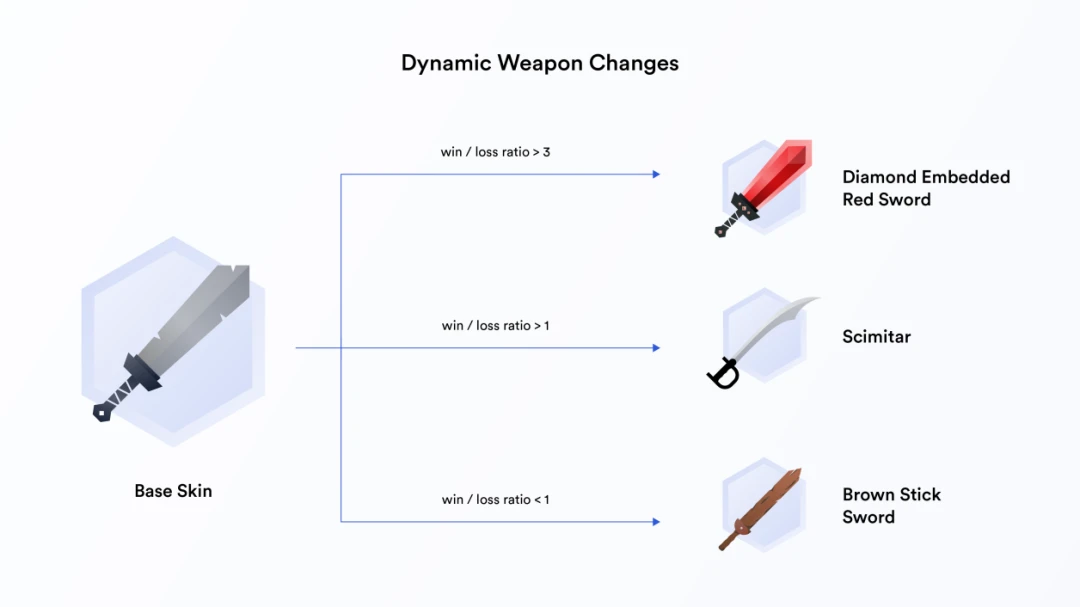
The dynamic NFT can change with the players game statistics, so it can create an immersive interactive experience.
secondary title
Automate securely with Chainlink Keepers
All successful games must ensure smooth functionality, and the game should be as reliable as possible to ensure the players gaming experience to the greatest extent. Blockchain game developers need some tools to improve development efficiency and overcome some limitations of the blockchain itself, such as smart contracts that require external triggers to execute.
Chainlink Keeperssecondary title
Cross-chain game
Afterwards, Chainlink will releaseCross-chain Interoperability Protocol (hereinafter referred to as CCIP). This is an open source blockchain interoperability standard that can easily bridge blockchain game data and assets to other blockchains, thus activating the great potential of blockchain game NFT, encrypted assets and community governance.
CCIP can bridge game NFT to various blockchains, transfer NFT assets between games on different blockchains, and can also synchronize game status across chains and establish a cross-chain NFT market. CCIP will have the potential to bring developers and users an easier and more convenient multi-chain experience.
This will greatly promote the development of the games intrinsic value, competition and application, and form a virtuous circle. Game publishers can easily move between blockchains and target a larger pool of gamers. This will form a social effect and eventually feed back the growth of the games intrinsic value. Similarly, CCIP will drive the development of the multi-chain market and bring higher liquidity and better pricing for game items, which will in turn improve the efficiency of the game economy.
image description

first level title
The changing trend of P2E mode
At present, the development of P2E games is far from mature. The peer-to-peer information transmission model on social media has spawned a series of online celebrities, musicians and anchors. These emerging professions constitute an innovative economic model based on digital advertising, micro-payments and subscription models. Similarly, P2E will also create a new economic model through collective decision-making and verifiable digital asset ownership, subverting the traditional game industry.
Since players can monetize game time, P2E has unlimited potential. Additionally, NFTs, crypto assets, and decentralized oracle networks are powerful tools that can improve efficiency, expand opportunities, and improve infrastructure for next-generation games.
And now its just beginning. While no one can predict exactly what the future will hold, one thing is for sure, blockchain technology will bring fairness, ownership, and an open marketplace to all gamers.
developer documentationdeveloper documentation, you can also passDiscordAsk a technical question or schedule a call with a Chainlink expert. For more information on oracle use cases, check outChainlinks web page about NFTs and blockchain games。
For the latest news about Chainlink development work, visit chain.link, subscribe to Chainlink news, and follow us on Twitter, YouTube, andRedditFollow Chainlink on Twitter.

